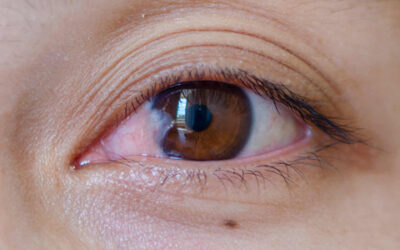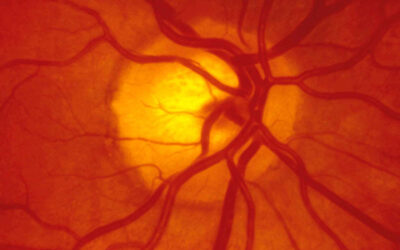Cataracts: Symptoms And Causes
Cataracts are a type of vision disturbance that causes the natural lens within the eye to become cloudy and blurry. They are the leading cause of preventable blindness worldwide*, a condition our optometrists frequently see in our clinics. While most cataracts are related to ageing and are treated in older adults, children and young adults can develop them too, either from birth or due to other medical or genetic conditions, injuries, or certain medications.
As cataracts are one of many causes of vision disturbances, it’s important to book in with an eye care professional if you notice blurring, haziness or cloudiness in your vision, even if it’s mild.
The most common symptom reported is that of looking through what appears to be dirty glasses.

How Does A Cataract Form?
While it may feel like a cloudy coating on the outside of the eyeball, cataracts occur when there is a problem within the lens of your eye:
- The lens of the eye, also known medically as the crystalline lens, is an essential part of the eye that allows it to focus on objects at different distances. It is located towards the front of the eyeball and resembles a deflated ball, and is clear and transparent, to allow light to enter the eye
- The lens’s job is to focus light to create the sharp images we see. It’s very flexible, so it can change shape: it can stretch and thin out when focusing on distant objects or shrink and thicken when focusing on near objects
- This movement can bend the light to focus correctly on the retina, a thin layer of tissue that lines the back of the inside of your eye, absorbs the light that comes into your eye and send this visual information to your brain along the optic nerve
A cataract or the beginnings of a cataract are seen a hardening or opacification of the lens fibres. This blocks the transmission of light through the eye.
Causes And Risk Factors For Cataracts
While the majority of cataracts cases our eye care professionals see are linked to ageing, other factors that may put you at risk* include:
- A previous eye injury or eye surgery
- Prior radiation therapy on the upper body
- High amounts of sun exposure to the eyes without adequate protection
- Steroids for conditions such as arthritis or asthma
- Previous eye inflammation
- Sedentary lifestyle
- Smoking or a high intake of alcohol
- A deficiency in particular specific vitamins such as lutein, zeaxanthin or zinc
- A family history of cataracts
Symptoms Of Cataracts
In its early stages, a cataract often does not have any symptoms, or may be so subtle that it is unnoticeable until a person’s eyesight or eye health is assessed by an optometrist.
However, a cataract may grow larger over time and affect more of the lens, making it harder for the patient to see. Some people only develop a cataract in one eye, though many will eventually develop it in both eyes.
While each person may experience cataracts differently, many of the most common symptoms include:
- Cloudy vision: at first, your vision may appear slightly blurry, as if you are looking through a camera that needs to be focused, and this can worsen over time
- Faded colours: colours may appear faded or less vibrant, as the white shade of cataracts can dull their vibrancy
- Yellow or brown tinges: as cataracts progress, the tissue can develop a yellow or brown hue, which can result in everything you see being tinted yellow as if you are wearing coloured sunglasses, changing your colour perception and preventing you from seeing the difference between different colours
- Light sensitivity: cataracts can make glare or bright lights uncomfortable or even painful
- Halos: when the lens of your eye becomes cloudy, it’s difficult for light to enter it and reach your retina, and it may enter at the edges and make it appear as if light sources such as oncoming car lights or street lights have halos surrounding them – yet another reason why driving in the dark with cataracts can be dangerous.
- Needing stronger glasses: if you find yourself feeling like you need stronger contact lenses or glasses to see clearly, you may have developed cataracts, so purchasing a stronger pair of glasses from the supermarket won’t resolve the issue
- Double vision: as light cannot enter the eyeball easily, it can result in double vision, or seeing two or more visions of a certain object

Don’t Delay Treatment: Get Your Eyes Checked Today
Any changes in vision, whether gradual or suddenly, should be evaluated.
Cataracts are treated by an opthalmologist who will remove them by a relatively safe procedure.
An optometrist can arrange a referral.
Book your appointment with one of our experienced optometrists.




